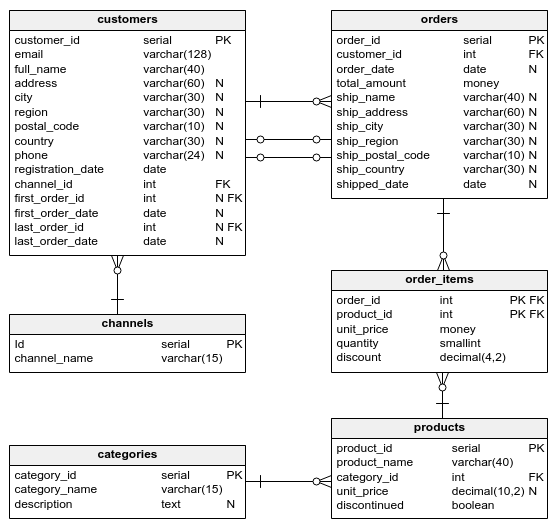Excellent! In the previous step, we found "good customers" whose average order value is above our criteria. Now, we'd like to create a more generalized report that shows the number of good customers in each weekly registration cohort. Take a look:
WITH good_customers AS (
SELECT
c.customer_id,
registration_date,
AVG(total_amount) AS avg_order_value
FROM customers c
JOIN orders o
ON c.customer_id = o.customer_id
GROUP BY c.customer_id, registration_date
HAVING AVG(total_amount) > 1636
)
SELECT
DATE_PART('year', registration_date) AS year,
DATE_PART('week', registration_date) AS week,
COUNT(*) AS good_customers
FROM good_customers
GROUP BY DATE_PART('year', registration_date), DATE_PART('week', registration_date)
ORDER BY DATE_PART('year', registration_date), DATE_PART('week', registration_date);
As you can see, we put the query from the previous step inside a CTE. In the outer query, in turn, we used the DATE_PART() function to extract the year and week of each customer's registration date. We grouped the good customers into weekly cohorts and counted the number of customers in each cohort.


